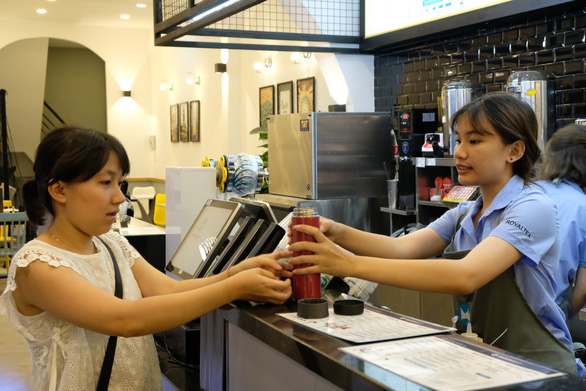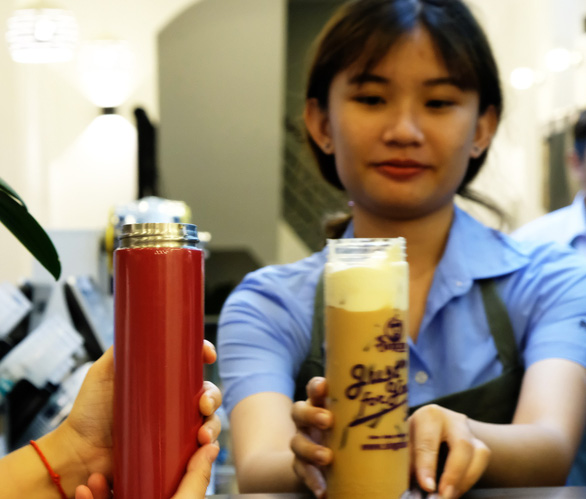Fans of bubble tea in Vietnam are finally waking up to the environmental harms of single-use plastics that come with their favorite drink and making a habit of bringing their own cups and straws whenever they feel like slurping some boba goodness.
Bubble tea, also known as bubble milk tea or simply boba, is a Taiwanese tea-based drink made by mixing tea with flavors of milk before adding a wide range of toppings such as chewy tapioca balls, fruit jelly, grass jelly, agar jelly, and puddings.
The sweet-and-rich drink has been popular in Vietnam for years, with hundreds to thousands of bubble tea shops springing up in every corner of major cities.
Most boba shops in Vietnam offer their drinks in sing-use plastic cups, accompanied by single-use plastic straws, regardless of whether it’s a takeaway or dine-in order.
This has contributed to the plastic waste problem in Vietnam, which dumps around 0.28-0.73 million metric tons of plastics into the ocean every year, the fourth highest source of oceanic plastic pollution globally, according to a 2015 report.
But die-hard bubble tea fans in Vietnam have decided their favorite drink don’t necessarily have to come at the expense of the environment,
Recently, some youths who visit bubble tea shops in the country have got into the habit of bringing their own reusable cups and straws and refusing to take plastics from the store.
“My employees have been drinking ‘zero-waste’ boba for nearly two years,” said Du My, who owns a spa in Ho Chi Minh City.
“But for it to work, everyone in the group must have a habit of bringing their own cups,” she said.
 |
| A customer brings her own cup to buy bubble tea at a shop in Ho Chi Minh City. Photo: Vu Thuy / Tuoi Tre |
Thanh Hoa, a 27-year-old from Ho Chi Minh City, said employees at a boba store that she frequently visits are all very welcoming of the idea.
“You just need to bring a cup with a known capacity so store employees can easily measure your drink,” Hoa said.
Ngoc Hien, who works at a bubble tea shop in Tan Phu District, Ho Chi Minh City, said he was confused at first when a customer brought her own cup to the store and asked him to fill it with her drink instead of using a plastic cup.
“But I understood the reason behind it after having my senior co-workers explained it to me about [the harms of] plastic cups,” Hien said.
However, he said the number of customers who bring their own cups to buy bubble tea is still rare.
“There was one incident when I visited a bubble tea shop in [downtown Ho Chi Minh City] and was refused service after asking employees to store my drink in my own cup,” Hoa said.
“Determined to drink only zero-waste bubble tea, I left to find another store,” she added.
According to Du My, bringing your own cup can be a difficult and troublesome habit to get oneself into, but encouragement and examples from friends and co-workers can go a long way in reshaping a person’s perception of the plastic waste problem.
“[My group of friends] kept reminding one another to bring our own cups, and before you know it, it has already become a habit,” My said.
Like us on Facebook or follow us on Twitter to get the latest news about Vietnam!



















































